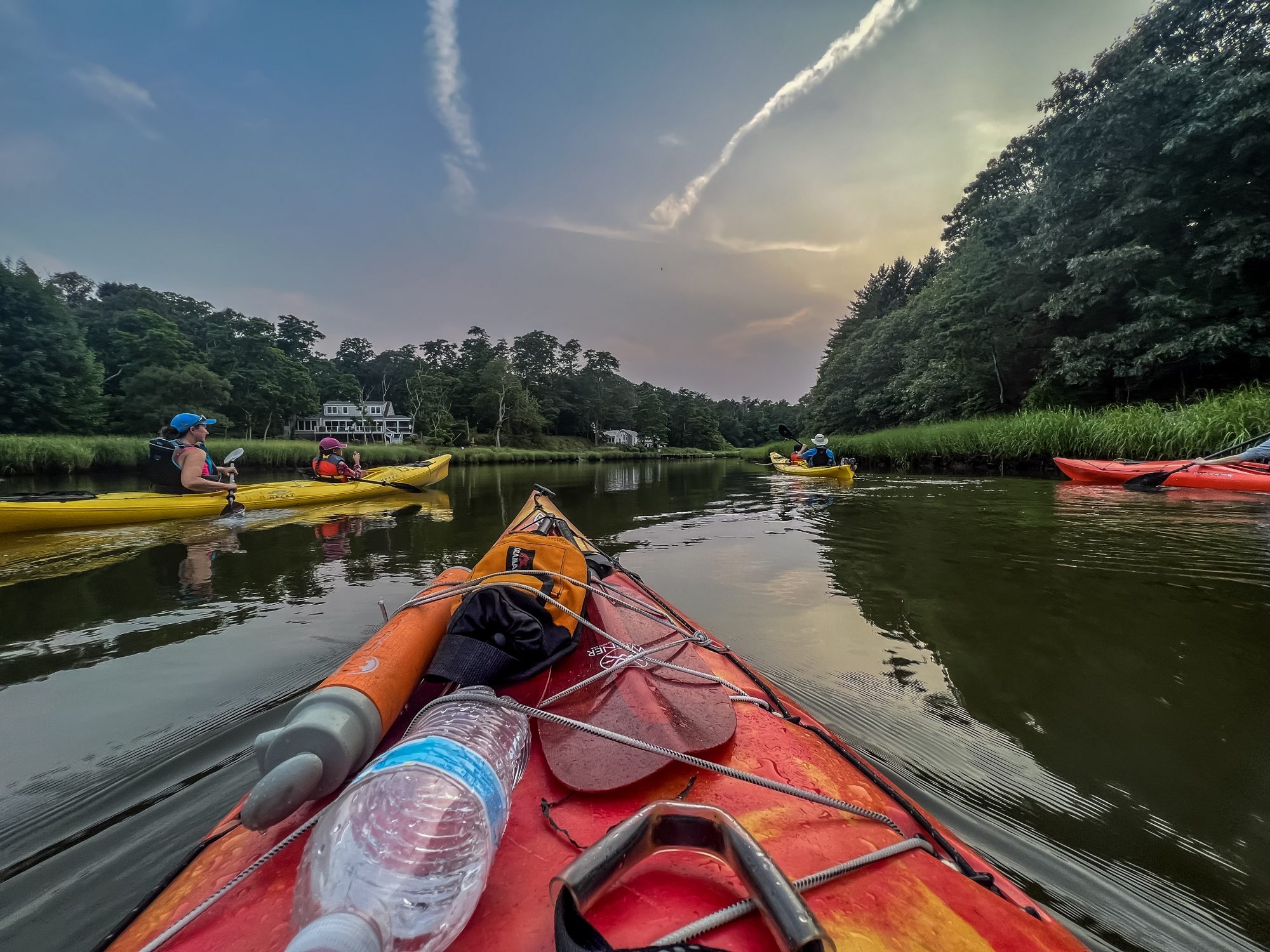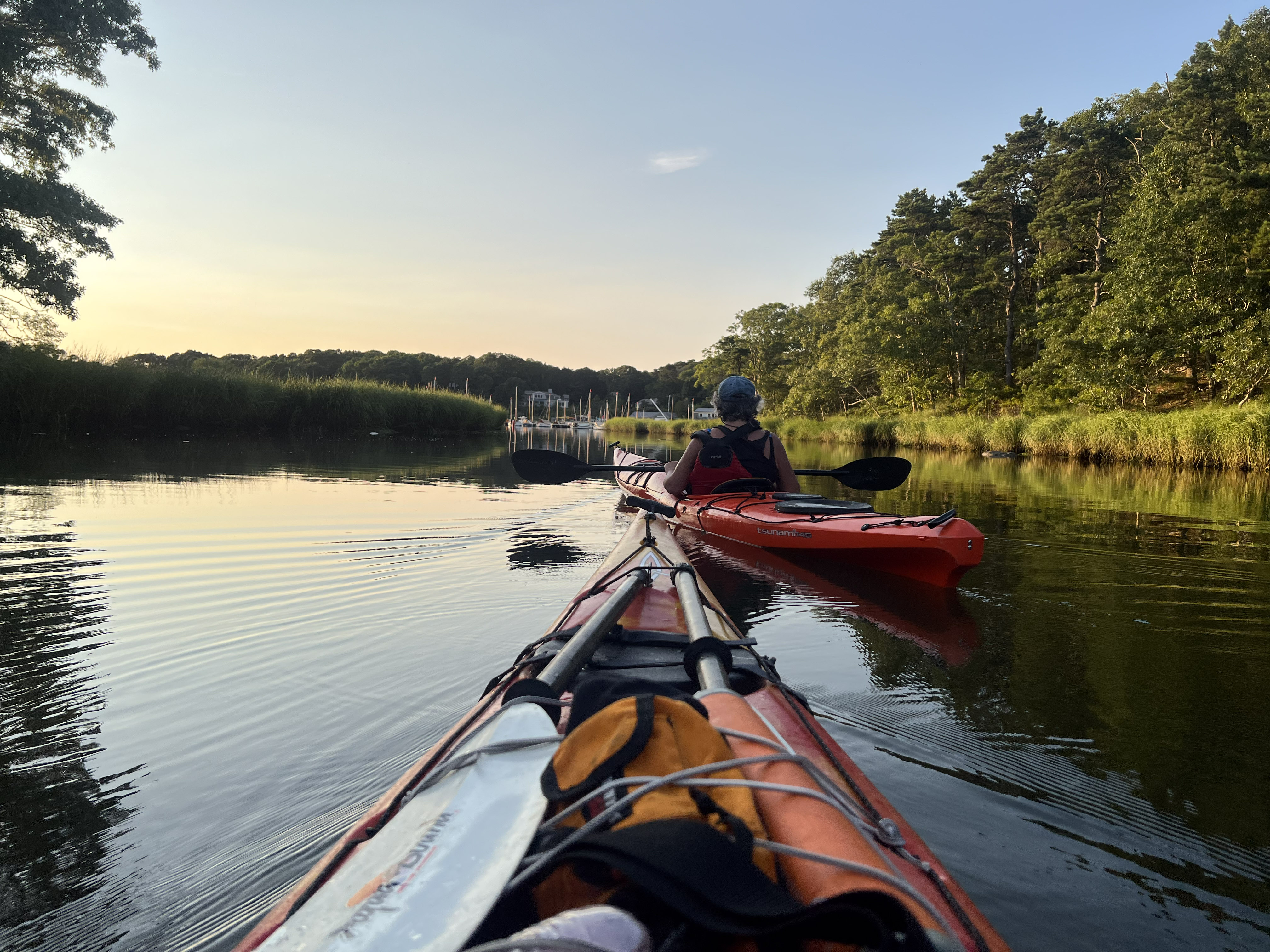Kayaking is a great way to enjoy the outdoors. One way to stoke a lifetime passion for paddling is to practice simple safety precautions while on the water. An often overlooked aspect of paddling safety is kayak bulkheads, which, in a way, act like PFDs for our boats—keeping them buoyant even if the main cockpit fills with water.

What Are Kayak Bulkheads?
Kayak bulkheads are sealed water-tight compartments commonly located behind the seat of many kayaks. In the case of touring kayaks, often an additional bulkhead is located at the front, before the footpegs. It’s common to access bulkheads via a hatch on the deck (top) of the boat.
At their most basic, kayak bulkheads provide a convenient place to store stuff on your boat, like food, water, a first-aid kit, or an extra layer. However, the most important benefit of kayak bulkheads is that they create air chambers at the end(s) of the craft, ensuring it remains afloat in the event of a capsize or the cockpit gets filled with water.
Why Kayak Bulkheads are Important
It’s shocking how fast a kayak can fill with water—like what can happen when one capsizes. Although a swamped kayak (a boat filled with water) might not sink, it’s nearly impossible to bail out and useless for helping you stay afloat—not to mention, it’s going to require a serious effort to recover the craft. The large, easy-to-enter, cockpit found on many beginner-friendly kayaks only expedites how quickly the craft floods with water.
One way to prevent a kayak from filling with water is to use a deck skirt or spray skirt. A deck skirt partially covers the cockpit opening and reduces the spray or splash coming in over the front of the kayak. A spray skirt, meanwhile, encloses the entire cockpit and further reduces the amount of water that may enter the boat. Recreational and touring spray skirts are typically made of nylon, are not as tight fitting to the paddler as whitewater spray skirts, and are not designed for white water in any situation where water may be forcibly applied to the boat.
Bulkhead Locations
It’s most common to find bulkheads at the stern (rear) of a kayak. A stern bulkhead creates a pocket of air in the back of the boat that keeps it from completely submerging if swamped. While rear bulkheads don’t offer an optimal safety situation—it’s unlikely you’ll be able to drain the water from the boat without assistance—it will give you something to hold onto if you need to wait for help. They also make it easier to recover a swamped kayak.
A key safety feature of a bulkhead is to reduce the amount of water that can enter the cockpit. While not optimal, a boat with a single stern bulkhead can be refloated with an assisted rescue called a “T-X style” rescue. That said, it is very difficult to re-enter and re-float a single bulkhead kayak alone.
It’s typical for touring kayaks to come equipped with an additional bow (front) bulkhead. A kayak with both bow and stern bulkheads is significantly more buoyant and harder to sink than those with other configurations. Two bulkheads also make self-rescues and assisted rescues easier.
A kayak with bulkheads in both the bow and stern can be refloated by an assisted rescue—a “T-rescue.” An experienced paddler with the proper equipment and training can typically re-enter and re-float this type of kayak alone.

What to Do with a Kayak with No Bulkheads
Kayaks with bulkheads provide a serious safety advantage over those without. That said, many beginner-focused and budget-oriented boats generally come without water-tight chambers. The same is true for most whitewater kayaks. Fortunately, there is a way you can add buoyancy to a kayak without bulkheads.
Float bags are kind of like durable, high-performance balloons. They inflate with air and are positioned in the front and/or rear of the boat. This allows them to create air pockets within the kayak, similar to those provided by bulkheads. By taking up space, they also limit the amount of water a craft can take on, further helping them stay afloat.
Float bags offer additional flotation to all manner of craft. For example, you can add float bags to the front and rear of a boat without bulkheads. Or, add a single float bag to the bow of a kayak equipped with just a stern bulkhead.
How to Use Float Bags
Proper use is imperative to the effectiveness of float bags. Fully inflate float bags for maximum buoyancy. It’s also essential to secure the float bags to your boat to ensure they remain in place in the event of an accident, like tipping over.
Float bags come in all shapes and sizes, making it easy to find a place for one on your craft. A logical place for kayak float bags is unsealed hatches—simply put them in the hatch. But, adding some cordage similar to that used on kayak decks is a great way to keep them in place on boats without unsealed hatches. Just ensure that there’s no excess cordage dangling inside the boat that could impede your ability to exit in a hurry.
Where to Use Float Bags
It may seem that float bags are most appropriate when paddling in challenging conditions, like in the ocean or fast-moving water. However, accidents can happen everywhere—from strong currents to calm flat water—and ensuring your kayak stays afloat can make the difference between a story about a near miss you tell and a tragic tale. Ultimately, bulkheads and float bags provide another margin of safety to paddling adventures.

Other Safety Considerations When Paddling
Staying safe on the water isn’t about making one good decision—like using a boat with bulkheads or float bags—rather, it’s about making a collection of decisions aimed at getting you back to shore happy and in one piece.
Other safety-first steps to take when paddling include wearing your life jacket—you’re not benefiting from a PFD stowed in a hatch or at your feet—wearing something on your feet, and slathering on sunscreen or wearing UPF protective clothes to avoid learning a hard paddling lesson for yourself.
Staying safe and having fun are synonymous on the water. So take a few minutes to ensure yourself an enjoyable experience.
Luke Foley
Luke Foley is passionate about discovering and sharing hidden local treasures and has long been a New England adventure enthusiast. After all, there are only a few places where you can skin for fresh tracks in the morning and have a sunset surf session on the same day.




